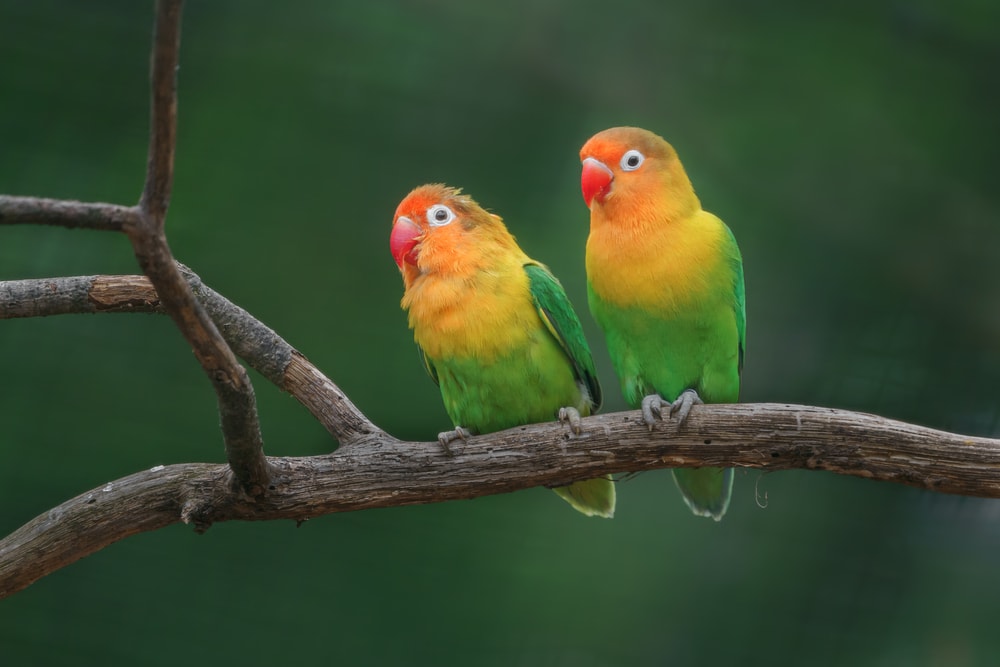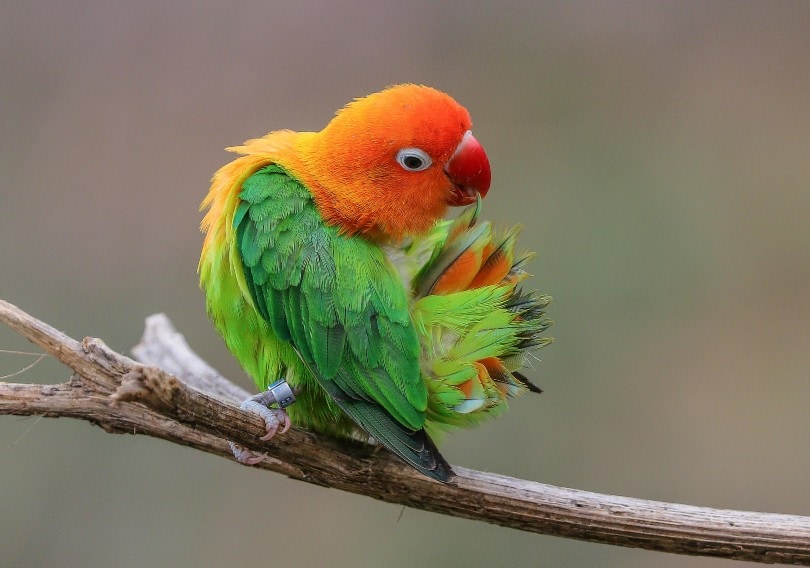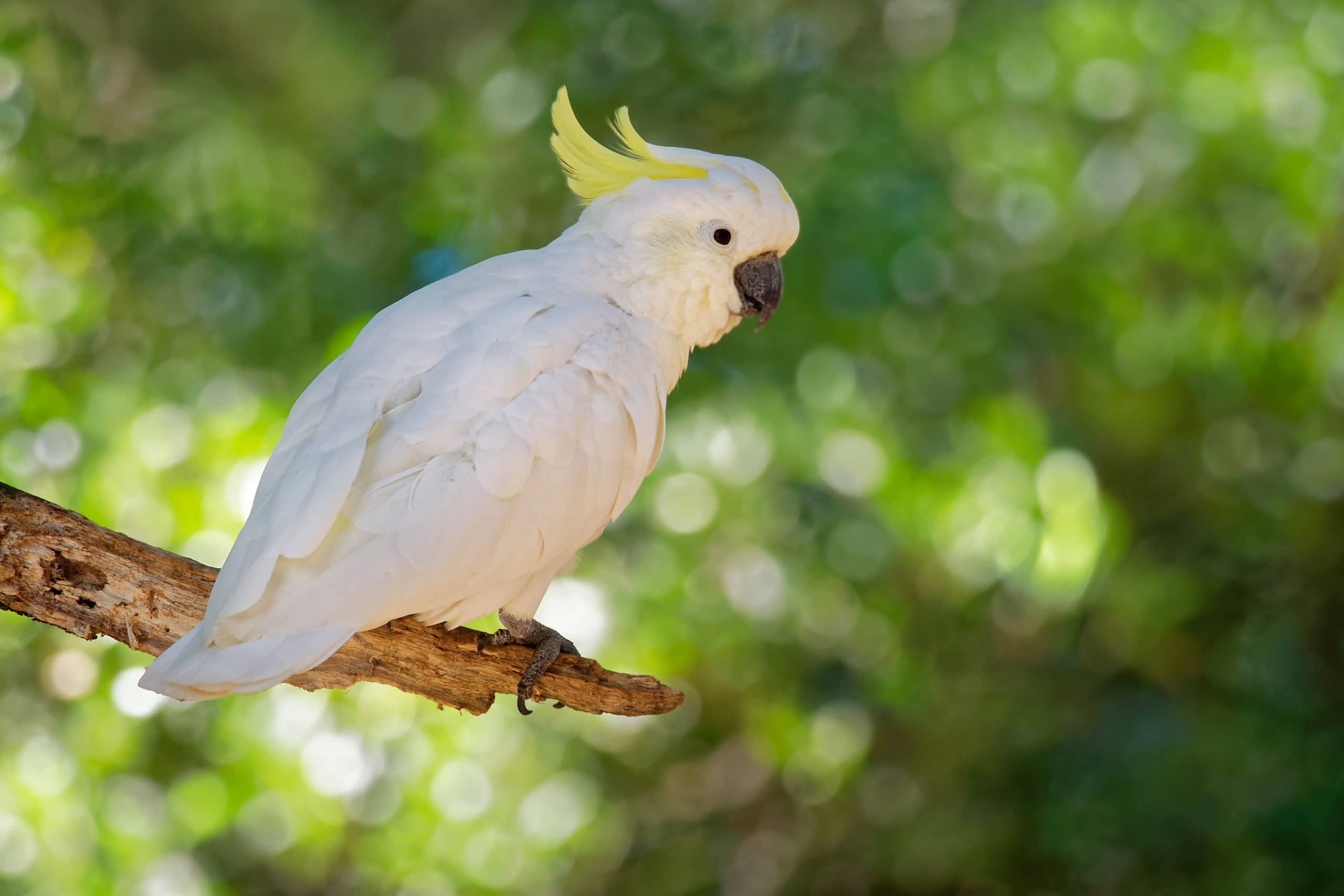
The Fischer’s Lovebird is a little rarer than the popular Peach-Faced Lovebird, but it’s still quite friendly and makes a great companion, so it’s a great choice if you want something a little different. It’s about the same size and just as colorful. If you are thinking about getting a Fischer’s Lovebird for your home but want to learn more about it first, keep reading while we discuss temperament, diet, habitat requirements, and more to help you make an informed decision.
Species Overview

| Common Names: | Fischer’s Lovebird |
| Scientific Name: | Agapornis fischeri |
| Adult Size: | 6 inches |
| Life Expectancy: | 20 years |
Origin and History
Fischer’s Lovebird comes from Central Africa, and breeders have been breeding them as pets in the United States since 1926. It gets its name from Gustav Fischer, the German explorer that first discovered it. You can find it easily in locations like Tanzania, Lake Victoria, and the Rift Valley in Nzega.
Temperament
Many owners describe their Fischer’s Lovebird as a curious bird that’s always on the go. It’s extremely active and fun to watch in its natural habitat as well as under human care. It’s also quite curious, and it can be fun to play games that make use of their curiosity. Like other Lovebirds, Fischer’s Lovebird usually takes a single mate for life, and if you have a male and a female, you will see them frequently cuddle and pal around with each other and may even be too busy to notice you are there or pay much attention to it. If you only have one bird, it will need plenty of attention and toys, especially the female, to prevent it from becoming destructive and territorial.
Speech & Vocalizations
Your Fischer’s Lovebirds will enjoy singing and whistling and will do so all day long, becoming especially noisy at dawn and at dusk. Unlike conures and parrots, lovebirds don’t learn human words or mimic sounds. Instead, they engage in a pleasant low volume chatter that won’t bother the neighbors. However, since these birds enjoy communicating with each other, the more birds you have, the louder they will get.
Fischer’s Lovebirds Colors and Markings

Fischer’s Lovebirds are one of the smallest kinds of parrot that you can buy. It usually only grows to about 6 inches tall and has an orange head with green plumage. It has white rings around the eyes and an orange beak. There can also be a bit of yellow coloring where the orange meets the green, and there may be green highlights around the face. The legs are usually grey, and they are monomorphic, which means that both sexes look identical.
Caring for the Fischer’s Lovebirds
Caring for your Fischer’s Lovebirds is not hard, and they are not very demanding in terms of habitat. You will need a cage that is at least 18 inches wide by 18 inches deep and 18 inches tall for a single bird, but since they prefer to live in pairs, your minimum cage size is 24 inches wide by 18 inches deep and 24 inches tall. However, this is the minimum cage size, and we recommend getting the larges cage your budget will allow. Your cage will also need soft wooden toys to play with, and plenty of perches to sit on that are large enough for two birds if you have them. Most owners recommend allowing them plenty of time outside the cage each day so they can explore and stay active.
Common Health Problems
Since Fischer’s Lovebirds like to live in pairs or flocks, they can have high anxiety as a single bird, especially if it isn’t getting enough attention, leading to feather plucking and even infection. If you notice your pet pulling out its feathers, we recommend spending more time with it, allowing it more time out of the cage, and considering a second bird to keep it company while you are busy.
Diet and Nutrition
Your Fischer’s Lovebird will primarily eat small seeds for the bulk of its die, but it might also eat small amounts of fruits and vegetables as well for variety. There are many commercial products available that you can purchase to make feeding your pet exceedingly easy, and we recommend feeding a healthy fruit like apple slices once a week as a treat.

Exercise
The best way to get your Fischer’s Lovebird some exercise is to let it out of the cage. Most owners recommend letting the bird have at least 4 hours outside each day, but you can and should extend that to as long as possible. You will need to seal the room off well if there are areas that you don’t want your bird to go to because they are extremely curious and will find any holes in your system. Always keep your other pets in a separate room, even if they seem friendly because it can scare your bird.
Where to Adopt or Buy a Fischer’s Lovebirds
Even though it’s not as popular as the Peach-Faced Lovebird, it comes in a close second, and you should have no problems finding one at your local pet store. However, we recommend checking around at your local animal shelter first to see if any need rescuing. You can usually purchase it for a much lower price and adopting your pet at the shelter not only saves the animal’s life, but it also frees up recourses for other animals.
Purchasing from the pet store will usually cost you between $45 and $130, depending on the current demand.
Final Thoughts
Fischer’s Lovebirds make great pets, and they are even better in pairs. If you have two of them, they will likely need little else and will be very happy as long as they get plenty of time out of the cage. Single birds are a little more work but also make great companions with a long lifespan of 20 years or more with very few trips to the vet. They don’t learn words or mimic sounds, but their chatter is soft and pleasing, and there are no loud squawks and screeches that their larger cousins make.
We hope you enjoyed reading over our look into these fascinating birds and found the answers you needed. If we have convinced you to make a new addition to your home, please share this guide to Fischer’s Lovebird on Facebook and Twitter.
Featured Image Credit by Danita Delimont, Shutterstock








